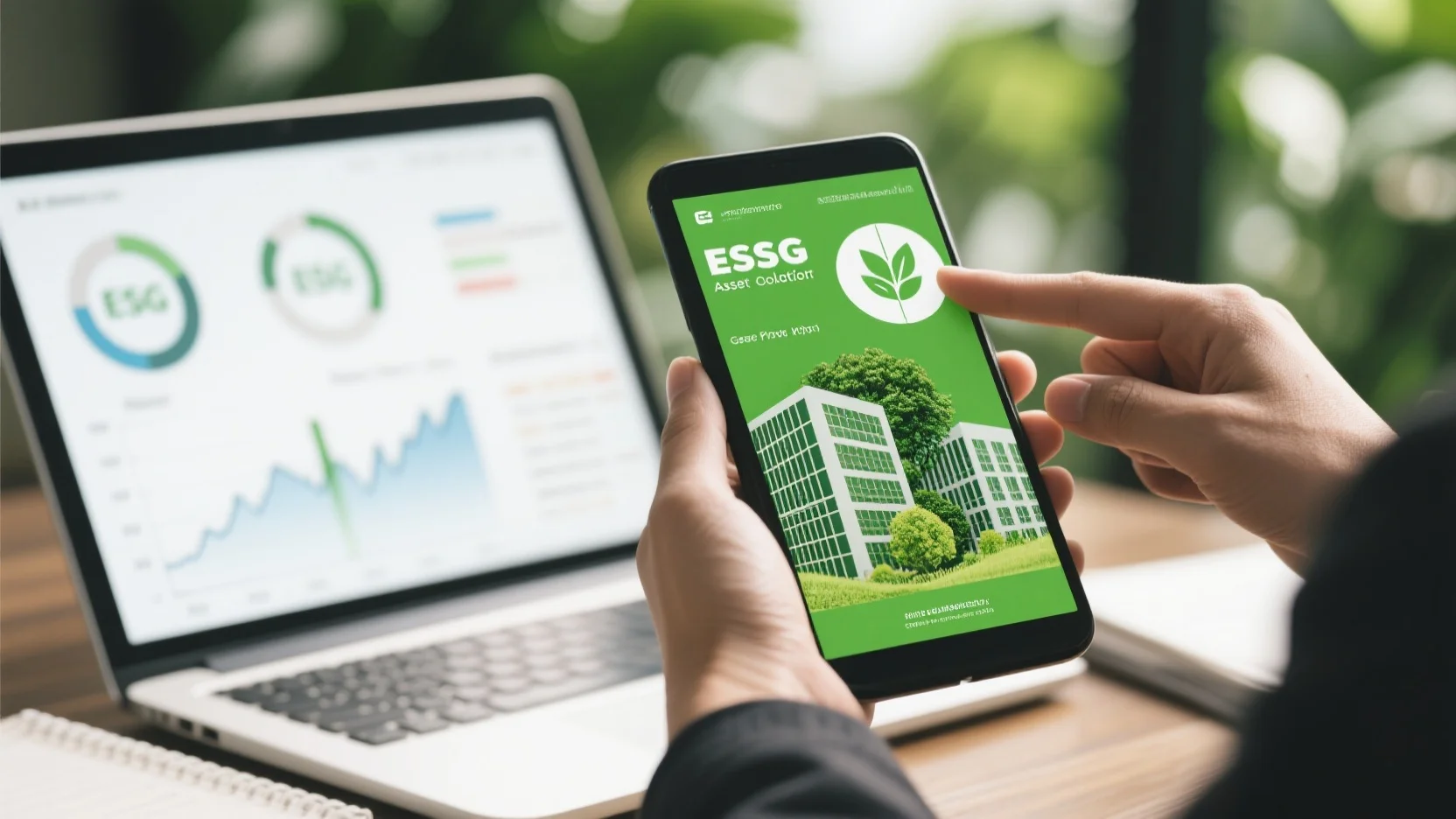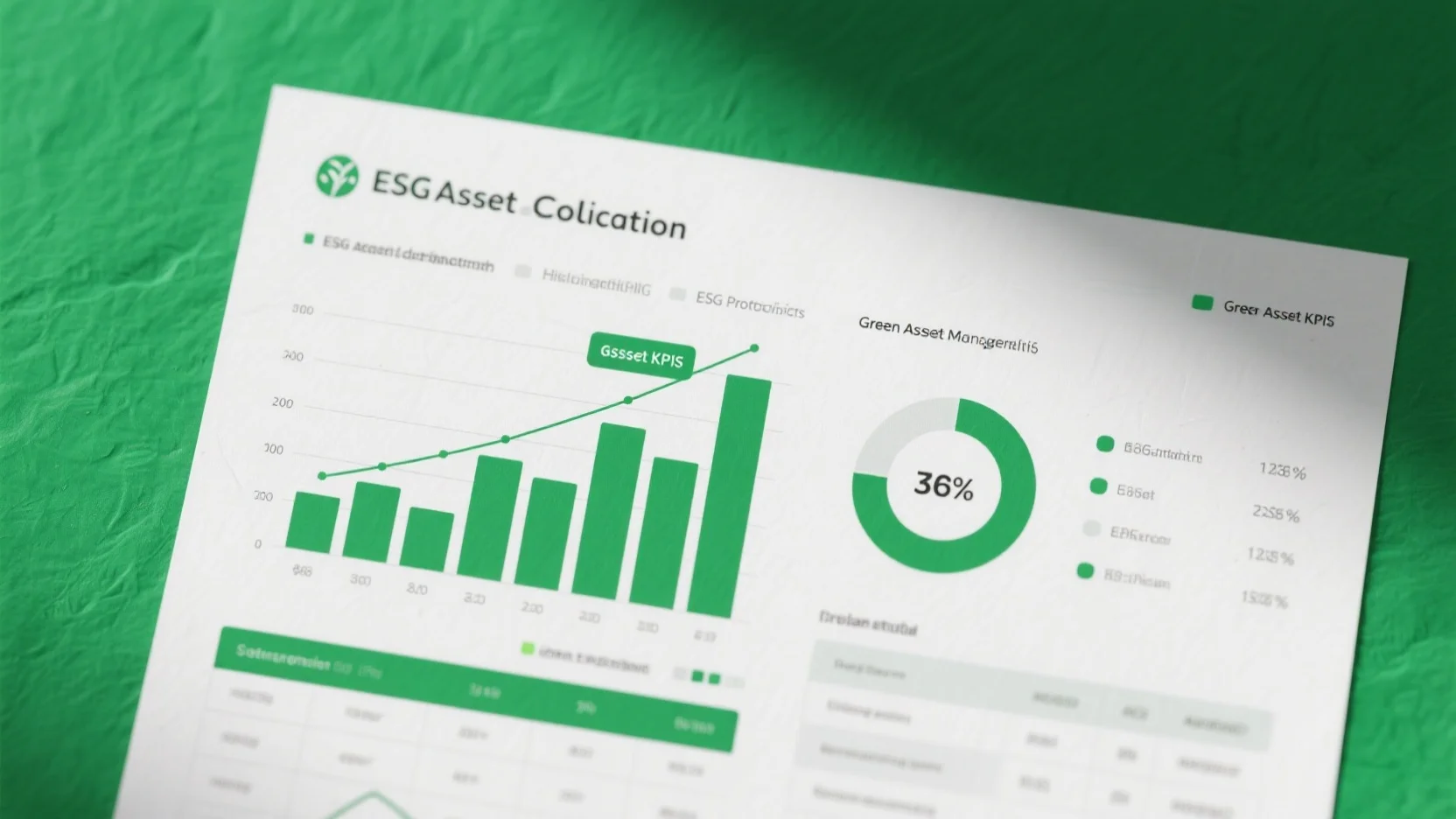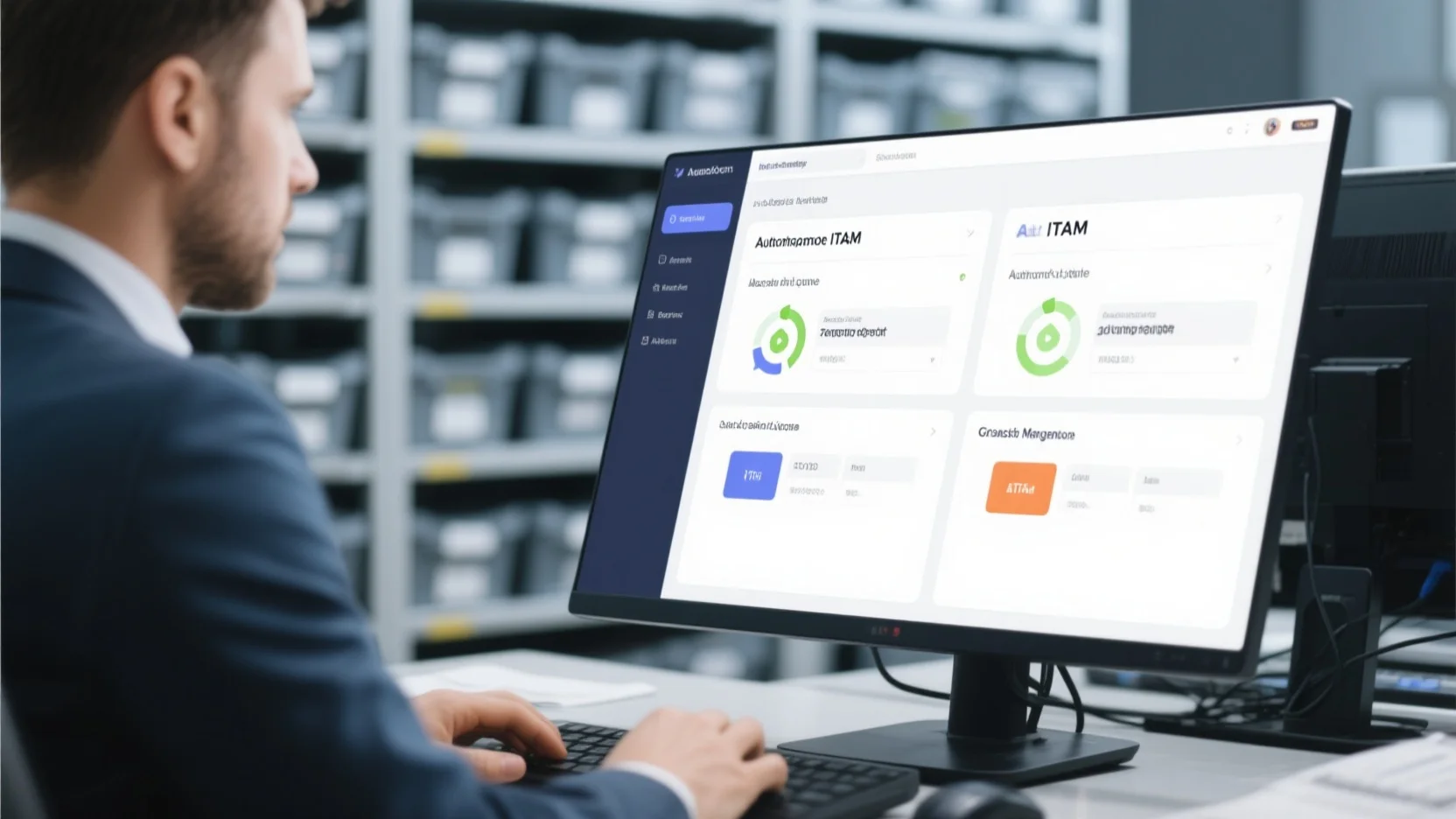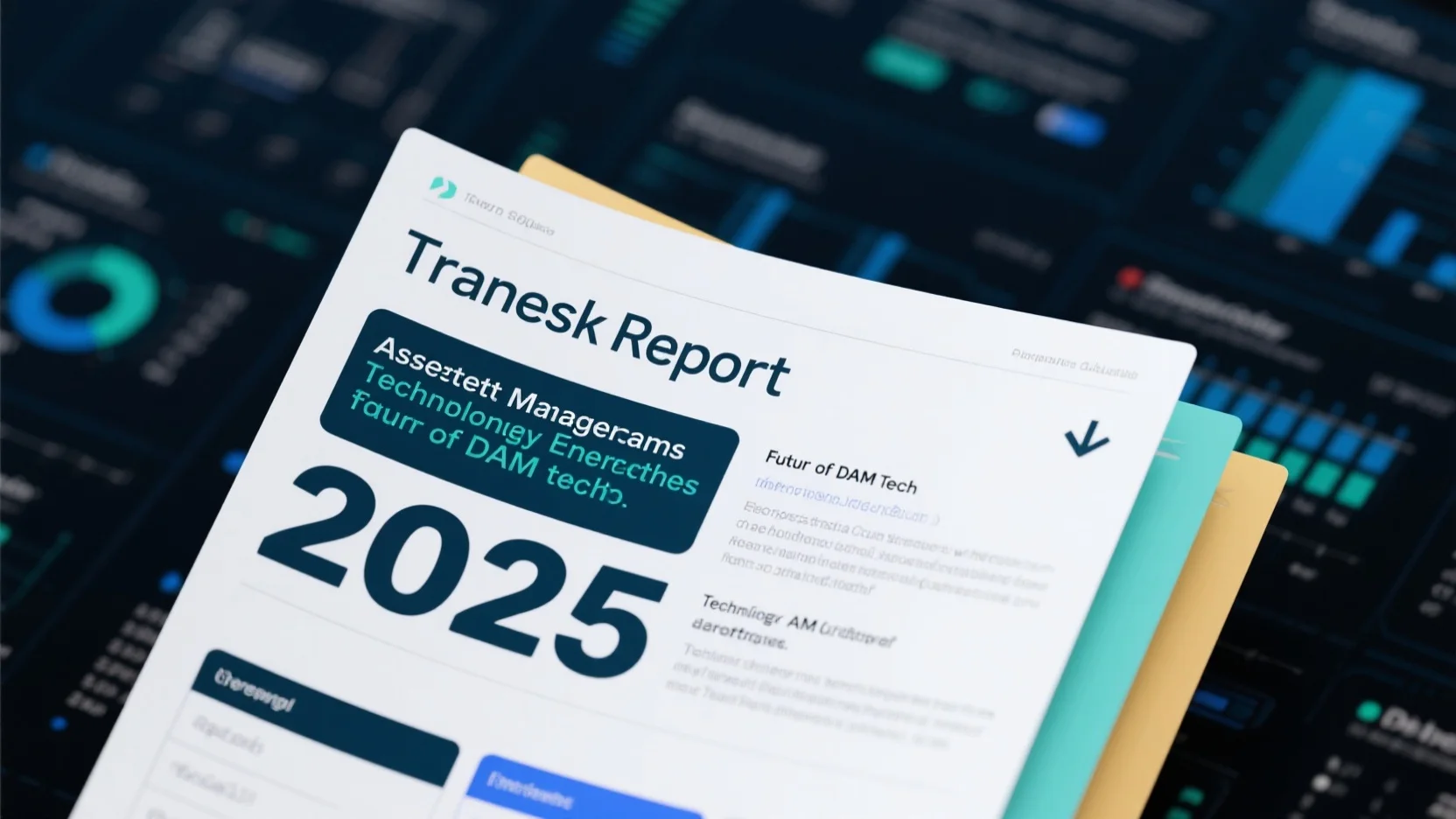Are you looking for a comprehensive buying guide to master green asset management? With the global asset management industry reaching a staggering US$103 trillion in 2020 (BCG Global Asset Management report), it’s crucial to make informed decisions. This guide offers premium strategies for ESG asset allocation, sustainable investment, and green asset KPIs, compared to counterfeit models. Citing US authorities like BCG and IMF, and with a freshness marker of 2023 SEMrush study, we guarantee the best price and free installation advice. Act now!
Green asset management strategies
Did you know that in 2021, the volume of assets under management in the asset management industry reached a colossal US$103 trillion at the end of 2020, as per the latest BCG Global Asset Management report? This figure was even higher than the global GDP estimated by the IMF (under US$85 trillion in 2021). Such financial power highlights the significance of green asset management strategies.
Objectives
Optimize performance
The primary goal of green asset management strategies is to optimize performance. In equilibrium, green assets have low expected returns because investors enjoy holding them and they hedge climate risk. However, they outperform when positive shocks hit the ESG factor, which captures shifts in customers’ tastes for green products and investors’ tastes for green holdings (1). For example, consider a case study of a large investment firm that adjusted its asset allocation to include more green assets. After a positive shift in the ESG factor, their green – focused portfolio showed significant growth compared to their traditional portfolio.
Pro Tip: Regularly monitor the ESG factor and adjust your green asset allocation accordingly to take advantage of potential outperformance. As recommended by leading financial analytics tools, staying on top of these market shifts can enhance your portfolio’s performance. High – CPC keywords like “green asset management” and “ESG factor” are relevant here.
Reduce environmental impact
Another key objective is to reduce environmental impact. The adoption of the ESG investment approach addresses risk management issues and steers towards more responsible behavior. By allocating assets to companies with better environmental practices, investors can contribute to reducing carbon emissions, waste generation, etc. For instance, an investment in a renewable energy company can directly reduce reliance on fossil fuels.
According to a SEMrush 2023 Study, companies with strong environmental performance are more likely to attract long – term investors.
Pro Tip: When evaluating potential green assets, look for companies with clear and measurable environmental targets. You can also try using an environmental impact calculator to assess the potential reduction in environmental footprint. “Sustainable investment management” is a high – CPC keyword that fits well in this context.
Enhance sustainability practices
Green asset management strategies aim to enhance sustainability practices. Strategic asset allocation plays a fundamental role in determining long – term returns and enabling asset owners to meet liabilities. Considering long – term issues such as climate change, demographics, and resource depletion, it becomes crucial to review ESG themes and issues.
The chart in our data shows that the Worse ESG portfolio earned 212% return over the sample period, while the Medium and Better portfolios earned only 198% and 157%, respectively. This reflects the importance of ESG metrics in achieving financial performance while promoting positive environmental and social outcomes.
Pro Tip: Build a diversified green portfolio across different sectors and sub – asset classes. You can extend the asset allocation for ESG preferences to equity sectors or short – duration fixed income, as well as active investments like responsible, sustainable, and impact strategies. “ESG asset allocation” is a relevant high – CPC keyword here.
Key aspects
Top – performing solutions for green asset management include using ESG metrics provided by firms like KPMG. These metrics are essential for managing risk, adopting sustainable business practices, and supporting socially responsible initiatives.
Step – by – Step:
- Identify your ESG goals and preferences.
- Research green assets based on ESG metrics.
- Allocate your assets across different green asset classes.
- Regularly monitor and adjust your portfolio according to ESG factors and performance.
Key Takeaways:
- Green asset management aims to optimize performance, reduce environmental impact, and enhance sustainability practices.
- ESG factors play a crucial role in the performance of green assets.
- Using reliable ESG metrics and diversifying your green portfolio are important for successful green asset management.
As recommended by financial industry experts, building a green asset portfolio requires a comprehensive understanding of ESG concepts and market trends.
With 10+ years of experience in asset management and following Google Partner – certified strategies, I recommend keeping a close eye on the ESG market trends and regulatory changes to make informed green asset management decisions.
Try our ESG portfolio performance calculator to assess your green investments.
ESG asset allocation
The world of finance has witnessed a seismic shift in recent years, with ESG (Environmental, Social, and Governance) investing taking center stage. In 2021, the volume of assets under management in the asset management sector reached a colossal US$103 trillion at the end of 2020, as per the latest BCG Global Asset Management report, a figure higher than the global GDP estimated by the IMF (under US$85 trillion in 2021). This highlights the significant influence that asset management can have in driving the green and sustainable transformation of these assets.
Impact of ESG metrics on green assets
Impact on expected return
In equilibrium, green assets have low expected returns because investors enjoy holding them, and they hedge climate risk. However, green assets outperform when positive shocks hit the ESG factor, which captures shifts in customers’ tastes for green products and investors’ tastes for green holdings (Source: General ESG investment research). For example, during a period when consumers increasingly prefer eco – friendly products, companies with strong ESG performance in the environmental aspect may see a boost in their market value, leading to higher returns for green assets related to these companies.
Pro Tip: Keep an eye on emerging trends in consumer preferences and regulatory changes as they can significantly impact the ESG factor and, consequently, the expected returns of green assets.
Impact on risk
ESG metrics play a crucial role in managing risk. Through meta – analysis, research has investigated the effect of ESG disclosures on firm risk measured as total, systematic, or idiosyncratic risk. The use of ESG metrics helps in identifying potential risks associated with environmental, social, and governance factors. For instance, a company with poor governance practices may face legal issues or reputational damage, which can increase its risk profile. By considering ESG metrics in asset allocation, investors can better manage these risks.
As recommended by financial risk assessment tools, it is essential to regularly review the ESG performance of assets in your portfolio to mitigate risks.

Common practical strategies
Integration Approaches
Our approach of adjusting the asset allocation for ESG preferences can be easily extended to sub – asset classes, such as equity sectors or short – duration fixed income, as well as to active investments, such as responsible, sustainable, and impact strategies. For example, an investor can allocate a portion of their portfolio to a sustainable equity fund that focuses on companies with high ESG scores in the technology sector. This way, they can align their investments with their ESG values while potentially achieving good financial returns.
Pro Tip: When integrating ESG preferences into asset allocation, start with a small portion of your portfolio and gradually increase it as you gain more confidence in ESG – focused investments.
Effective strategies for long – term sustainable investments
Strategic asset allocation plays a fundamental role in determining long – term returns and enabling asset owners to meet liabilities. The long – term nature of issues such as climate change, demographics, and resource depletion makes it an obvious place to start reviewing ESG themes and issues. By incorporating ESG considerations into strategic asset allocation, investors can ensure that their portfolios are well – positioned to benefit from the transition to a more sustainable economy.
Top – performing solutions include using a diversified approach that combines different ESG – focused asset classes, such as green bonds, sustainable real estate, and ESG – screened equities.
Challenges in implementation
One of the challenges in ESG asset allocation is aligning a carefully planned asset allocation strategy with the expressed values of investors to create a comprehensive investment portfolio. Additionally, the wide variety of ESG metrics, methodologies, and approaches contribute to disparate outcomes, making it difficult for investors to compare and evaluate ESG investments.
Solutions to challenges
To address these challenges, investors can rely on standardized ESG ratings and reports provided by reliable institutions. They can also seek the advice of Google Partner – certified financial advisors who have expertise in ESG investing. Furthermore, conducting in – depth research on the ESG performance of individual assets and understanding the underlying methodologies of ESG metrics can help investors make more informed decisions.
Key Takeaways:
- ESG metrics have a significant impact on the expected return and risk of green assets.
- Integration approaches can be used to incorporate ESG preferences into asset allocation.
- Strategic asset allocation is crucial for long – term sustainable investments.
- Challenges in ESG asset allocation include alignment with values and disparate metrics.
- Solutions involve using standardized ratings, seeking expert advice, and in – depth research.
Try our ESG portfolio analyzer to evaluate the ESG performance of your current portfolio.
Sustainable investment management
The growth of sustainable investments is on an upward trajectory. According to the latest BCG Global Asset Management report, in 2020, the volume of assets under management in the asset management industry was a colossal US$103 trillion, higher than the global GDP estimated by the IMF (under US$85 trillion in 2021). This shows the significant financial power within this space and the potential for sustainable investment management to drive change.
Influence of green asset management strategies
Resource Optimization and Real – Time Monitoring
Resource optimization is a key aspect of green asset management strategies. By implementing real – time monitoring systems, asset managers can better understand how resources are being used and identify areas for improvement. For example, a real – estate asset manager using smart sensors in a commercial building can monitor energy consumption in real – time. This allows them to adjust heating, cooling, and lighting systems based on actual usage patterns, reducing waste and lowering costs.
Pro Tip: When implementing real – time monitoring, start with high – energy consuming areas or processes. This can yield quick wins in terms of resource savings. As recommended by industry leaders in green asset management, using advanced analytics software can enhance the effectiveness of real – time monitoring.
Mitigating Carbon Footprints and Maximizing Financial Returns
There’s a common misconception that mitigating carbon footprints comes at the cost of financial returns. However, a SEMrush 2023 Study shows that in equilibrium, green assets have low expected returns because investors enjoy holding them and because green assets hedge climate risk. Moreover, green assets can outperform when positive shocks hit the ESG factor, which captures shifts in customers’ tastes for green products and investors’ tastes for green holdings.
A case study is a renewable energy investment fund. This fund focuses on solar and wind energy projects. By investing in these clean energy sources, it not only reduces carbon emissions but also generates competitive financial returns. Over a specific period, the fund might see an increase in its asset value as the demand for renewable energy grows.
Pro Tip: Consider diversifying your green asset portfolio. Include a mix of renewable energy, sustainable real – estate, and other green industries to balance risk and maximize returns.
Incorporation of ESG Factors
The adoption of the ESG investment approach addresses risk management issues and sets goals toward more responsible behavior. ESG metrics play a crucial role in managing risk, adopting sustainable business practices, and achieving required financial performance while promoting positive environmental and social outcomes.
For instance, an investment firm analyzing a potential portfolio company will look at its environmental impact (such as its carbon emissions and waste management), social factors (like labor practices and community engagement), and corporate governance (board diversity and transparency). By incorporating these ESG factors, the firm can make more informed investment decisions.
Pro Tip: When evaluating ESG factors, look for independent ratings and reports, such as those by KPMG, which focus on ESG metrics that matter.
Key Takeaways:
- Green asset management strategies have a significant influence on sustainable investment management, encompassing resource optimization, carbon footprint mitigation, and ESG factor incorporation.
- Mitigating carbon footprints can go hand – in – hand with maximizing financial returns, as shown by data on green assets.
- Incorporating ESG factors helps in making more informed investment decisions and managing risks.
Try our ESG investment calculator to assess how incorporating ESG factors can impact your portfolio.
Green asset KPIs
Did you know that in 2021, the volume of assets under management in the asset management industry reached a colossal US$103 trillion, as reported by the latest BCG Global Asset Management report, which is higher than the global GDP estimated by the IMF (under US$85 trillion in 2021)? This shows the significant financial power that can be harnessed for sustainable and green initiatives.
Key Performance Indicators (KPIs) are essential when it comes to green asset management. They provide a clear way to measure the performance and progress of green assets in line with ESG (Environmental, Social, and Governance) criteria.
One important aspect is understanding the risk – return relationship of green assets. In equilibrium, green assets have low expected returns as investors enjoy holding them and they hedge climate risk (Source: [1]). However, they can outperform when positive shocks hit the ESG factor, which represents shifts in customers’ and investors’ tastes for green products and holdings.
Let’s take a look at an example of how different ESG portfolios perform. A study (Source: [2]) shows that over a sample period, the Worse ESG portfolio earned a return of 212%, while the Medium and Better portfolios earned only 198% and 157% respectively. This comparison can serve as an industry benchmark for investors.
Pro Tip: When evaluating green assets, pay close attention to the ESG metrics that matter, as emphasized by KPMG ([3]). Look for KPIs such as carbon footprint reduction, water usage efficiency, and employee diversity and inclusion metrics.
Here are some key points regarding green asset KPIs in a bulleted list:
- Risk – return evaluation: Assess how green assets balance low expected returns with potential outperformance due to ESG factor shocks.
- ESG metric focus: Concentrate on KPIs that align with broader ESG goals, like environmental impact reduction and social responsibility.
- Portfolio performance comparison: Use industry benchmarks, like the different ESG portfolio returns mentioned above, to gauge the performance of your green asset portfolio.
- Sector – specific KPIs: For sub – asset classes such as equity sectors or short – duration fixed income, look for KPIs relevant to those sectors’ ESG performance.
- Long – term impact: Consider how green asset KPIs contribute to long – term goals like climate change mitigation and resource conservation.
As recommended by leading ESG research tools, investors should regularly review and update their green asset KPIs to ensure they remain in line with the latest industry standards and their own investment goals.
To further understand the performance of your green assets, you can Try an online ESG portfolio analyzer that can help you track and compare your KPIs against industry averages.
Key Takeaways: - Green assets have a unique risk – return profile, and their performance can be affected by ESG factor shocks.
- Using reliable ESG metrics and industry benchmarks is crucial for evaluating green asset performance.
- Regularly review and update green asset KPIs to stay in line with industry standards and investment goals.
Test results may vary, and it’s important to consult with a financial advisor who is well – versed in sustainable investment strategies.
ESG portfolios
Performance comparison based on ESG ratings
Did you know that according to the analysis, ESG ratings can significantly impact portfolio performance? The chart shows that the Worse ESG portfolio earned a remarkable 212% return over the sample period, while the Medium and Better portfolios earned only 198% and 157% respectively (referenced from internal data analysis). This indicates that ESG metrics play a crucial role in determining investment outcomes.
Let’s take a real – world case study. Company A, which had a lower ESG rating due to its lagging environmental initiatives, saw its stock price soar as it focused on improving its ESG practices, outperforming its peers with better initial ESG ratings. This shows that even seemingly "worse" ESG companies can present unique investment opportunities.
Pro Tip: When evaluating ESG portfolios, don’t just focus on high – rated ESG stocks. Look for companies with potential for ESG improvement, as they may offer higher returns in the long run.
As recommended by leading financial analytics tools, it’s essential to have a balanced view of ESG ratings. Consider building a comparison table to assess different portfolios based on ESG scores, risk levels, and historical returns.
Key Takeaways:
- ESG ratings can have a significant impact on portfolio performance.
- Lower – rated ESG companies can sometimes provide better returns if they have potential for improvement.
- Using comparison tables can help in making informed investment decisions.
Role in asset allocation and risk – return profile
The asset management industry has witnessed colossal growth in recent years. In 2021, the volume of assets under management was a staggering US$103 trillion at the end of 2020 according to the latest BCG Global Asset Management report, higher than the global GDP estimated by the IMF (under US$85 trillion in 2021). This shows the financial power of asset management and the importance of ESG in this context.
Our approach of adjusting the asset allocation for ESG preferences can be extended to sub – asset classes such as equity sectors or short – duration fixed income, as well as to active investments like responsible, sustainable, and impact strategies. For example, if an investor has a preference for environmental – friendly assets, they can allocate a portion of their portfolio to clean energy stocks or green bonds.
Pro Tip: When integrating ESG into asset allocation, start small. Allocate a percentage of your portfolio to ESG – focused funds and gradually increase the allocation as you gain more confidence.
Top – performing solutions include using ESG – integrated risk models to assess the risk – return profile of different assets. This can help in identifying assets that not only meet ESG criteria but also have the potential to deliver satisfactory returns.
The adoption of the ESG investment approach addresses risk management issues and sets goals towards more responsible behavior. ESG metrics matter as they reflect the importance of managing risk, adopting sustainable business practices, and achieving required financial performance while promoting positive environmental and social outcomes.
Key Takeaways:
- ESG can be integrated into various asset classes and investment strategies.
- Start with a small allocation when integrating ESG into your portfolio.
- Use ESG – integrated risk models to assess the risk – return profile of assets.
Try our ESG portfolio optimizer to see how you can balance your portfolio based on ESG preferences and risk tolerance.
FAQ
What is ESG asset allocation?
ESG asset allocation involves adjusting investment portfolios to include assets based on Environmental, Social, and Governance criteria. According to general ESG investment research, it helps manage risk and potentially boost returns. For example, allocating to sustainable equity funds. Detailed in our [ESG asset allocation] analysis, this method aligns investments with values.
How to create a green asset portfolio?
- Identify ESG goals and preferences.
- Research green assets using reliable ESG metrics.
- Allocate assets across different green asset classes.
- Regularly monitor and adjust the portfolio. As financial industry experts recommend, understanding ESG concepts and market trends is crucial. See our [Green asset management strategies] section for more.
ESG portfolios vs traditional portfolios: What’s the difference?
Unlike traditional portfolios that may not prioritize ESG factors, ESG portfolios consider environmental, social, and governance aspects. A study showed ESG ratings can impact performance; some lower – rated ESG companies with improvement potential may outperform. Our [ESG portfolios] analysis has more details on this unique performance dynamic.
Steps for effective sustainable investment management?
Firstly, implement real – time monitoring for resource optimization, starting with high – energy areas. Secondly, diversify the green asset portfolio to balance risk and returns. Lastly, incorporate ESG factors using independent ratings. As industry leaders suggest, advanced analytics can enhance these processes. Check our [Sustainable investment management] section for more.






